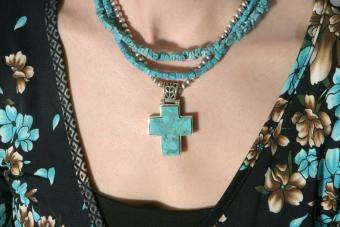
Those blood-red stones shimmering with an inner light have been sought for centuries for their beauty and value. Red rubies can be breathtakingly beautiful and just as expensive! Here are some pointers on how to buy jewelry with inset rubies.
Tips for Buying a Ruby
When it comes to buying a ruby or ruby jewelry, there are a few key factors you need to take into consideration before making your purchase. Not only is the color and clarity important, but the cut and origins come into play. Rubies typically come in grades from AAA to B. However, an AA at one jeweler might be an A at another. So, it can be important to have a good understanding of what to look for when buying rubies. Explore these 5 tips for buying rubies.
1. Check the Clarity in Your Ruby
Natural gemstones like rubies will have some type of inclusions. This means that the stone will display fine lines or spots within itself when held up to the light. A good quality ruby will be clear, and the inclusions, if any, would be minimal, or at least not visible to the naked eye. The presence of inclusions does mean that the stone may crack or chip; they are imperfections in the stone.
When checking for inclusions, always ask the jeweler to see your ruby under a loupe or a microscope. Do not buy the ruby if it shows a cloudy appearance due to the inclusions. Also, look for inclusions that reach the surface as these make the ruby weaker and tend to split along the crack. Professionals use this grading system for inclusions.
- VVS: minor inclusions; does not affect the appearance
- SI1: slight inclusions; little effect on the brilliance
- SI2: slight inclusions; slight effect on the brilliance
- I1: obvious inclusions
- I2: prominent inclusions
- I3: many prominent inclusions
2. Understand Size and Color of Rubies
The most prized rubies have a blood-red color. However, the stones can come in almost all shades of red, including pink, according to Gemological Institute of America, Inc. Typically, you want to look for a vivid red ruby color, not orangish or purplish. The saturation of the red is also graded on a scale from 1-6, with 6 being the optimal saturation of the stone.
The size, the quality, and the color of the ruby will decide the price you pay. Larger stones are more expensive; similarly, clear rubies with little or no inclusions will cost more than those with visible inclusions. A ruby without inclusions can cost you twice as much as another that is much bigger but with some inclusions within.

3. Know Your Cuts
Rubies come in different cuts. According to the GIA, you can find rubies in round, oval, triangular, square, pear, and marquise cuts. Typically, the shape of the original stone dictates the type of cut that is best for the stone you have. For example, the wrong cut on a stone can change the look of the stone from red to orangish. Therefore, you want to make sure you purchase your rubies from an experienced jeweler and check the color and saturation to ensure the cut hasn't affected the stone's quality.
Always view your prospective ruby purchase under proper lighting. Fluorescent lights work wonderfully for doing paperwork in the office; however, they are "red deficient" and so make assessing colored gems a nightmare. Ask to view the ruby under a variety of lights, such as incandescent and daylight.
4. Check for Enhancements
Very often, rubies have some form of a surface coating that is used to camouflage surface fractures. Such coatings will wear off in time. Always ask your jeweler if the ruby has been treated or coated in any manner to enhance its appearance. Different types of treatments include heat treatments, glass filling, or flux healing.
5. Ask About the Rubies' Origins
Rubies are mined around the world. However, some locations are famous for giving high-quality gemstones. Therefore, knowing if your ruby was mined in Myanmar or Pakistan can be telling of the quality of the gemstone. For example, Burmese rubies are rare and more expensive and found in Myanmar, while rubies mined in India are cheaper in quality.
Value of Rubies
According to the Gem Society, rubies come in all different price points. Burma rubies can sell for over a million dollars a carat. Additionally, Paragon Gems Inc. features top-grade rubies for $700-1,500 a carat. However, low-grade commercial rubies can be found for $50-100 a carat.

Getting the Perfect Setting
Now that you have an idea of how to find the perfect stone, it's also important to know a bit about the setting. Given their red color, rubies work best with yellow or white gold, as well as platinum. However, the beautiful color of the ruby can work well with different metals. So, the setting can depend on your personal preferences.
How to Buy Rubies
Knowing how to buy ruby jewelry can help you out in the long run. Not only are you going to get the best gemstone for your money, but you can be assured that you won't be taken advantage of. Know that you know how to look for ruby jewelry; it's time to get buying.







